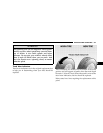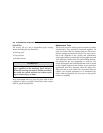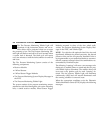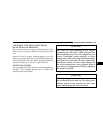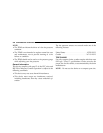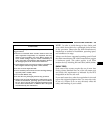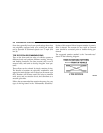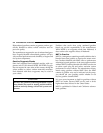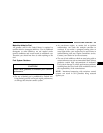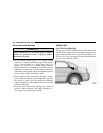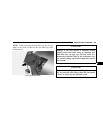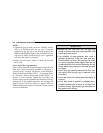
CAUTION!
To avoid damage to your vehicle or tires, observe the follow-
ing precautions:
•
Because of restricted chain clearance between tires and
other suspension components, it is important that only
chains in good condition are used. Broken chains can
cause serious damage. Stop the vehicle immediately if
noise occurs that could indicate chain breakage. Remove
the damaged parts of the chain before further use.
•
Install chains on the rear wheels as tightly as possible and
then retighten after driving about
1
⁄
2
mile (0.8 km).
•
Do not exceed 30 mph (48 km/h).
•
Drive cautiously and avoid severe turns and large bumps,
especially with a loaded vehicle.
•
Use on Rear Wheels only.
•
Do not drive for prolonged period on dry pavement.
•
Observe the tire chain manufacturer’s instructions on the
method of installation, operating speed, and conditions
for use. Always use the lower suggested operating speed
of the chain manufacturer if different than the speed
recommended by the manufacture.
NOTE:
In order to avoid damage to tires, chains, and
your vehicle do not drive for a prolonged period of time
on dry pavement. Observe the tire chain manufacturer’s
instructions on method of installation, operating speed,
and conditions for usage.
Always use the lower suggested operating speed if both
the chain manufacturer and vehicle manufacture suggest
a maximum speed. This notice applies to all chain
traction devices, including link and cable (radial) chains.
SNOW TIRES
Some areas of the country require the use of snow tires
during winter. Standard tires are of the all season type
and satisfy this requirement as indicated by the M+S
designation on the tire side wall.
If you need snow tires, select tires equivalent in size and
type to the original equipment tires. Use snow tires only
in sets of 4, failure to do so may adversely affect the
safety and handling of your vehicle.
STARTING AND OPERATING 239
5



